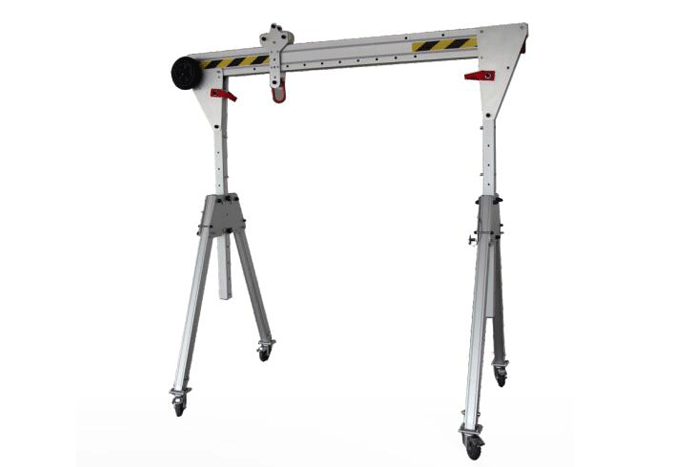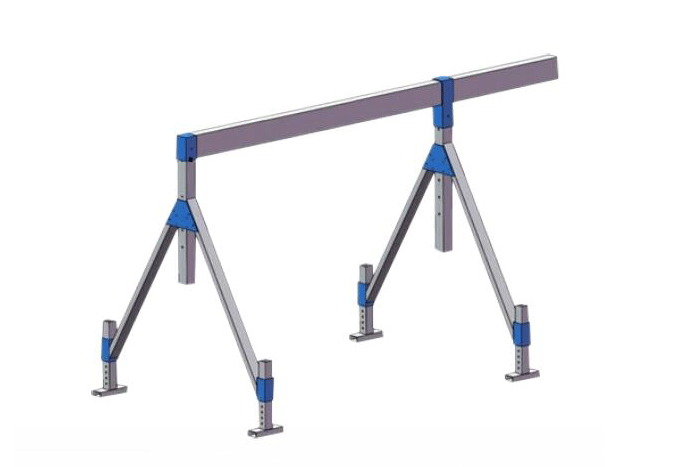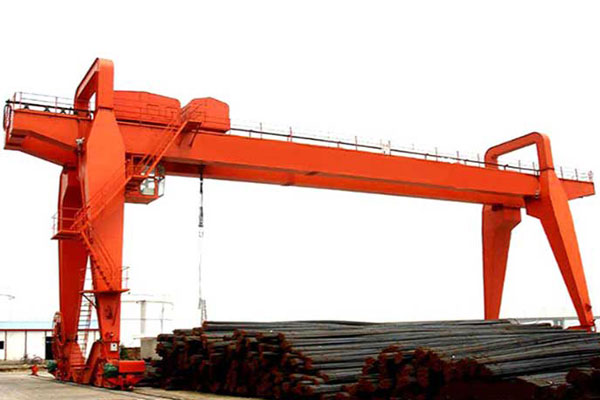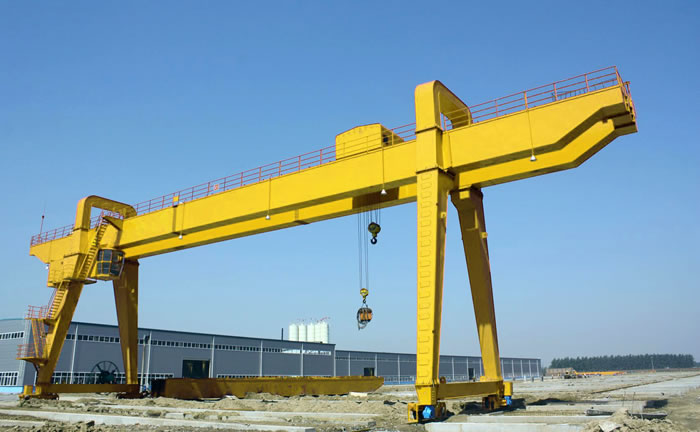Ton Gantry Crane & Price
1 Ton Adjustable Aluminum Portable Gantry Crane in Egypt
Lifting Capacity: 1 ton
Span: 1-8 m
Lifting Height: 1-8 m
Working Class: A3
Note: We can design and manufacture the crane according your requirments and working conditions.
1 ton adjustable aluminum portable gantry crane designed to lift loads up to 1 ton, features an adjustable height setting, allowing the user to set the crane at different lifting heights depending on the specific needs of the task. Aluminum construction is known for its lightweight yet durable properties, making the gantry crane easier to move and transport, and resistant to corrosion. The adjustable aluminum portable crane 1 ton is easy to assemble and disassemble. This portability is particularly useful in applications where the crane needs to be relocated frequently.
1 Ton Adjustable Aluminum Portable Gantry Crane Types - Movable and Fixed:
 Movable Aluminum Portable Crane 1 ton with Adjustable Span and Height
Movable Aluminum Portable Crane 1 ton with Adjustable Span and Height
Features:
- Aluminum alloy structure
- Light weight
- Easy assemble and disassemble
Max Capacity: 1 ton
Max Height: 8 m
Max Span: 8 m
Hoist Type: Electrical or manual
Crane Travelling: Manual universal wheels
 Fixed Aluminum Portable Crane 1 ton with Adjustable Span and Height
Fixed Aluminum Portable Crane 1 ton with Adjustable Span and Height
Features:
- Aluminum alloy structure
- Adjustable span
- Light weight
Max Capacity: 1 ton
Max Height: 8 m
Max Span: 8 m
Hoist Type: Electrical or manual
Crane Travelling: Fixed supporting leg
1 ton aluminum portable gantry crane common applications in Egypt:
1 ton portable gantry crane, including portable and adjustable models, play a crucial role in various industries by facilitating material handling and lifting operations. Their application in Egypt's pillar industries could have several benefits:- Construction Industry: 1 ton portable gantry crane are often used in construction projects for lifting and moving heavy materials, equipment, or prefabricated components. In a developing economy like Egypt, with ongoing infrastructure projects, the use of such cranes can enhance construction efficiency and speed up project timelines.
- Manufacturing and Production: 1 ton portable gantry crane are essential in manufacturing plants for tasks such as loading and unloading materials, positioning workpieces, and assembling large components. The use of an adjustable aluminum 1 ton portable gantry crane can provide flexibility in adapting to different production needs.
- Shipping and Logistics: Egypt's strategic location as a gateway between Africa and the Middle East makes logistics a vital industry. 1 ton portable gantry crane are instrumental in loading and unloading cargo at ports, facilitating efficient operations in the transportation sector.
- Energy Sector: Egypt has a significant energy sector, 1 ton portable gantry crane can be used in the installation and maintenance of equipment in power plants, including the handling of heavy components for renewable energy projects or conventional power generation.
- Mining Industry: 1 ton portable gantry crane can play a role in the mining sector by assisting in the extraction, transportation, and handling of minerals and other resources.
- Maintenance and Repair Services: Adjustable 1 ton portable gantry crane are useful in maintenance and repair operations across various industries. They provide a mobile and versatile solution for lifting tasks in workshops or maintenance facilities.
1 ton adjustable aluminum portable gantry crane component parts:
The components of a adjustable aluminum portable crane 1 ton may vary slightly based on the manufacturer and specific model, but generally, they include the following key elements:
- Uprights: Vertical legs that provide support for the gantry crane. These are often adjustable in height to accommodate different lifting requirements.
- Cross Beams: Horizontal beams that connect the uprights. The length of the cross beams can often be adjusted to fit the width of the load or workspace.
- Casters: Wheels mounted at the base of the uprights to facilitate easy movement and transportation of the gantry crane. Casters are typically lockable to ensure stability during lifting operations.
- Hoist: The hoist is the lifting mechanism responsible for raising and lowering the load. It may be electric or manual, and it's attached to a trolley that moves along the cross beams.
- Trolley: The trolley is the component that allows horizontal movement of the hoist along the cross beams. It enables the precise positioning of the load.
- Adjustable Height Mechanism: A system that allows the adjustment of the height of the uprights. This feature is valuable for adapting the gantry crane to different lifting tasks and working environments.
- Locking Mechanism: Secure mechanisms to lock the adjustable components in place, ensuring stability during lifting operations. This is particularly important for safety.
- Fasteners: Bolts, nuts, and other fasteners used to connect and secure various components of the gantry crane. Regular checking and tightening of these fasteners are part of the maintenance routine.
- Safety Features: Emergency stop buttons, limit switches, and overload protection mechanisms contribute to the overall safety of the gantry crane. These features are designed to prevent accidents and protect both the equipment and operators.
- Aluminum Construction: The entire structure is made of lightweight yet durable aluminum. This material provides corrosion resistance, making the crane suitable for various environments.
- Lubrication Points: Points where lubrication should be applied to ensure smooth operation of moving parts. Regular lubrication is part of the maintenance routine to prevent wear and reduce friction.
- Stabilizing Components: Additional components, such as braces or stabilizing bars, may be included to enhance the stability of the gantry crane during lifting operations.
How to Assemble and Disassemble an 1 ton Adjustable Aluminum Portable Gantry Crane
Assembling and disassembling a 1 ton adjustable aluminum portable gantry crane involves careful steps to ensure proper setup and safe operation. Below is a general guide, but always refer to the manufacturer's specific instructions provided in the manual for your crane model. Safety is paramount, so follow all safety precautions during assembly and disassembly.
Assembling the 1 ton Aluminum Gantry Crane:
- Read the Manual: Familiarize yourself with the manufacturer's manual for the specific model of the adjustable 1 ton aluminum portable gantry crane. Follow the step-by-step instructions provided.
- Check Components: Before starting assembly, ensure that all components are present and in good condition. Check for any signs of damage or missing parts.
- Select a Suitable Location: Choose a level and stable surface for assembly. Make sure there is enough space for the crane to be fully assembled without obstructions.
- Position the Uprights: Lay out the uprights (vertical legs) on the ground in the desired position. Ensure that the uprights are spaced according to the manufacturer's specifications.
- Connect the Cross Beams: Attach the cross beams (horizontal beams) to the uprights, following the provided instructions. Secure them using the recommended fasteners.
- Install the Casters: If the adjustable 1 ton aluminum portable gantry crane has casters for mobility, install them on the bottom of the uprights. Ensure that the casters are securely attached and that they can swivel freely.
- Attach the Hoist and Trolley: If not pre-installed, attach the hoist and trolley to the cross beam according to the manufacturer's guidelines. Make sure all connections are secure.
- Test the System: Perform a preliminary test of the gantry crane's movements and functions. Check for smooth operation and make any necessary adjustments.
Disassembling the 1 ton Aluminum Gantry Crane:
- Secure the Load: If there is a load on the crane, ensure that it is safely lowered to the ground and that the area is clear before starting the disassembly.
- Remove the Hoist and Trolley: Detach the hoist and trolley from the cross beam following the manufacturer's instructions. Ensure that the hoist is in the fully lowered position.
- Remove Casters (if applicable): If the gantry crane has casters, remove them carefully, ensuring that the crane is stable on its legs.
- Disconnect Cross Beams: Loosen and remove the fasteners connecting the cross beams to the uprights. Carefully disassemble the cross beams.
- Take Apart the Uprights: Disconnect the uprights from the cross beams. Depending on the design, this may involve removing bolts or pins.
- Inspect and Store Components: Inspect all components for any signs of damage. Clean and store the components in a designated area to prevent loss or damage.
- Follow Manufacturer's Instructions: Always follow the specific instructions provided by the manufacturer for both assembly and disassembly. This ensures that you are using the correct procedures for your particular gantry crane model.
Remember, safety is crucial throughout the entire process. If at any point you are unsure about assembly or disassembly, consult the manufacturer's manual or seek assistance from a qualified professional.
Common Maintenance Practices for adjustable 1 ton Aluminum Portable Gantry Crane:
Regular maintenance is essential to ensure the safe and efficient operation of a adjustable 1 ton aluminum portable gantry crane. Here are common maintenance practices that should be performed on such equipment:
- Visual Inspections: Conduct daily visual inspections before each use. Look for signs of wear, damage, or any loose or missing components. Check for any unusual sounds during operation.
- Check Fasteners: Inspect all bolts, nuts, and fasteners regularly. Make sure they are tightened to the manufacturer's specifications. Pay attention to connections between components, including uprights, cross beams, and caster assemblies.
- Lubrication: Lubricate all moving parts according to the manufacturer's recommendations. This includes wheels, gears, and any other components that experience friction. Regular lubrication helps prevent wear and ensures smooth operation.
- Inspect Casters: If the 1 ton aluminum gantry crane has casters, check them for wear, proper alignment, and smooth rotation. Replace any damaged or worn casters promptly.
- Check Electrical Components: If the 1 ton aluminum gantry crane is equipped with an electric hoist, trolley, or other electrical components, inspect the wiring, connections, and controls regularly. Ensure that all electrical components are functioning correctly.
- Inspect Hoist and Trolley: Regularly inspect the hoist and trolley for any signs of wear, damage, or malfunction. Verify that the brakes, hooks, and other safety features are in good working condition.
- Examine Structural Components: Inspect the structural components, including uprights and cross beams, for signs of deformation, cracks, or other damage. Pay attention to welds and connections.
- Check for Corrosion: Aluminum is resistant to corrosion, but it's essential to inspect the 1 ton aluminum gantry crane for any signs of corrosion, especially in areas where dissimilar metals may be in contact. Address any corrosion promptly to prevent structural issues.
- Inspect Safety Devices: Verify that all safety devices, such as limit switches, emergency stop buttons, and overload protection, are functioning correctly. Test these devices periodically as part of routine maintenance.
- Alignment and Leveling: Check the alignment and leveling of the 1 ton aluminum gantry crane regularly. Ensure that it is on a level surface and that all components are properly aligned to prevent stress on the structure.
- Documentation and Records: Maintain a log of all maintenance activities, inspections, and repairs. Keep records of any replacements or adjustments made to the 1 ton aluminum gantry crane.
By following these common maintenance practices, you can enhance the safety, reliability, and longevity of your adjustable 1 ton aluminum portable gantry crane. Regular inspections and proactive maintenance help identify and address issues before they escalate.
Safety Operating 1 ton Aluminum Gantry Crane:
Operating a 1 ton aluminum gantry crane requires careful attention to safety to prevent accidents and ensure the well-being of operators and others in the vicinity. Here are some safety tips to follow:
- Inspect Regularly: Before each use, conduct a thorough inspection of the adjustable 1 ton aluminum portable gantry crane. Check for any signs of wear, damage, or loose components. If you notice any issues, address them before operating the crane.
- Weight Capacity: Never exceed the crane's specified weight capacity. Ensure that the load being lifted is well within the crane's limits. Consult the manufacturer's guidelines for load capacities and configurations.
- Ground Conditions: Set up the 1 ton aluminum gantry crane on a level and stable surface. Uneven ground can lead to instability and accidents. If necessary, use leveling devices to ensure the crane is properly balanced.
- Secure the Load: Always properly secure the load before lifting. Use appropriate slings, hooks, or other lifting devices as recommended by the manufacturer. Make sure the load is balanced and centered.
- Personal Protective Equipment (PPE): Operators should wear appropriate personal protective equipment, including helmets, gloves, and safety shoes. This equipment can provide protection in the event of any accidents or falling objects.
- Operate Smoothly: Use slow and smooth movements when operating the 1 ton aluminum gantry crane. Avoid sudden starts or stops to prevent swinging or uncontrolled movements of the load.
- Emergency Stop: Familiarize yourself with the emergency stop mechanism on the crane and know how to use it. This is crucial in case of any unforeseen issues or emergencies.
- Weather Conditions: Consider weather conditions before operating the crane. High winds or adverse weather can affect stability and should be taken into account when planning lifts.
By following these safety tips and adhering to the manufacturer's guidelines, you can help ensure the safe and efficient operation of a adjustable 1 ton aluminum portable gantry crane.

